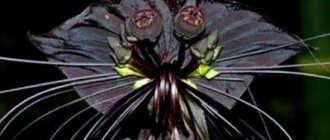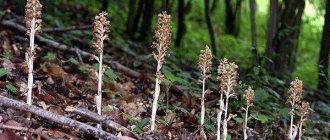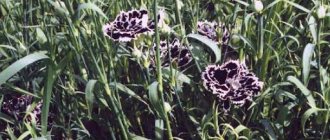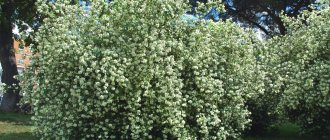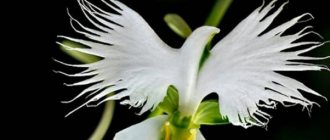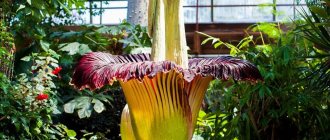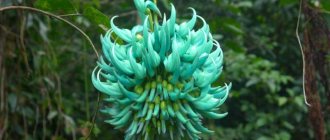The endless blue of the sky is reflected on numerous fields and meadows in the form of the most beautiful wildflowers - cornflowers. Many people consider them weeds, but in that case they are the most picturesque of all weeds that exist.
And if the wild species of cornflowers impress exclusively with their sky blue, then their garden counterparts, bred by breeders, surprise with the versatility of their non-standard colors. Below are the most beautiful cornflowers with photos, which surprise and enchant with their simplicity and magical beauty.
Types of the most beautiful cornflowers
The genus of these flowers includes up to 500 species (both annual and perennial), which decorate fields, meadows and gardens from early summer until September. In addition to the beautiful flowers with the characteristic blue color of the petals, there are also those that impress with white, yellow, purple and pink blooms.
Blue or field cornflowers
Greek myths say that these flowers healed the wise Chiron from the hydra bite. That is why cornflowers are called the “blue flower of the centaur.” These annual plants with characteristic turquoise inflorescences are one of the most beautiful representatives of the cornflower genus. But in agriculture, bright blue flowers in rye fields are considered weeds and are destroyed.
The length of the stem of field cornflowers can reach up to 80 cm. There are annual and perennial varieties, the turquoise colors of which create the illusion of the sky falling on fields, meadows and wastelands. Due to the characteristic color of the petals, field cornflowers are called blue flowers or hairs. These flowers were especially popular among the ancient Egyptians, who widely used the image of cornflowers when creating jewelry. Even in the tomb of Tutankhamun, the pharaoh’s funeral wreath of “blue flowers” was found.
Mountain cornflowers
These flowers can grow in the most difficult conditions, on almost any soil. They are found in the vast expanses of Central Asia and Western Europe. They can bloom in the usual blue color or have unusual purple and burgundy colors.
The colorful blooms of these cornflowers can be observed from late May to August.
White cornflowers
Many people associate cornflowers exclusively with the blue of the sky. But there are exceptions that are no less captivating with their extraordinary beauty. White cornflower is like an albino in a family of colorful brothers. This is a very rare species, which even ended up on the pages of the Red Book. The plant is also small in size - the stem of white cornflowers rarely exceeds 30 cm.
Large-headed cornflowers
These perennial plants impress with their longest stem (up to 1 m) and large flowers (up to 7 cm in diameter) of light or bright yellow color. The homeland of the species is the expanses of Transcaucasia. In gardens, such flowers are planted in flower beds in the background to create a beautiful background for other tall plants. These beautiful cornflowers bloom in mid-July and delight with their colorful blooms for 1.5 months.
Meadow cornflowers
This species is a true decoration of meadows and forest glades. In Slavic mythology, its appearance is associated with the anger of a mermaid, who turned a guy named Vasily, who refused her love, into a beautiful meadow flower. These plants are perennial, and their stem height reaches up to 80 cm. Meadow cornflowers impress with their unusual pink or purple color, and their flowers are collected in baskets.
Fisher's cornflower
This flower is endemic to the Caucasus, and in the wild it is found exclusively in the vast alpine meadows of this region. Its stems can reach up to 50 cm, and the flowers have a wide variety of colors. The inflorescences can be light pink, with a lilac or lemon tint and stand out beautifully among the alpine forbs.
Whitened cornflower
Due to the heterogeneity of color, this type of cornflower is considered one of the most beautiful among its “relatives”. Its flowers are bright pink, and its pinnately dissected leaves, which are white below and green above, give a special decorative appeal. The height of the plant can reach 60 cm. Its native growing areas are the mountains of the Caucasus and Northern Iran.
Pink cornflowers
These perennial plants up to 1 m in height fascinate with large single inflorescences of soft pink color.
It is this type of cornflower that is most often grown in gardens. Flowers delight with their colorful blooms from mid-summer.
Russian cornflower
These flowers with light yellow inflorescences decorate the steppe expanses of Russia and Kazakhstan in the summer. The bare stems of the plant can grow up to 50-140 cm. Growing in the wild in difficult conditions, this type of cornflower can withstand drought and is resistant to cold. In gardens, it most often plays the role of background in mixed flower beds.
Planting and caring for summer color cornflower
Summer paint cornflower is an artificially bred species that is used mainly for decorative purposes. In comparison with ordinary types, it can have not only standard, cold colors, but also brighter ones. In general, plants of this species have one of the smallest heights among all representatives of the cornflower species.
Before planting, read the instructions on the back of the seed package. Before planting, prepare all the necessary garden tools and improve the soil before sowing. Please note that the seeds are sown directly into the ground, without the use of seedlings. The distance between seed holes should be at least half a meter to all adjacent holes.
One of the propagation options occurs by dividing an adult plant into “divisions” and growing them directly.
Cornflower seeds are sown at the end of April, and division by dividing an adult plant occurs in mid-to-late August. Seeds will grow effectively if they are less than three years old, otherwise the chance of successful germination is sharply reduced.
The plants are not whimsical, and they only need watering and loosening the soil for better access of oxygen to the roots. Flowering when planted in April will occur in June-July.
Bouquets of cornflowers
Since ancient times, beautiful legends and songs have been written about these wildflowers. In Rus', the first harvested sheaf of the new harvest was certainly decorated with cornflowers and placed in the most prominent place in the hut. Blue flowers among the ears, according to one legend, are a symbol of the love of heaven for earth. Therefore, artists often depict bouquets of cornflowers along with golden spikelets in their paintings. Such floral arrangements also look original in the decor of wedding halls.
In the photo: Wreath of cornflowers
In Japan, these wildflowers are considered a symbol of love and fidelity, and in Europe they are associated with simplicity, trust and sincerity. It is not surprising that bright blue cornflowers are most often used in luxurious wedding bouquets, emphasizing the modesty and femininity of the bride.
In the photo: Spikelets, cornflowers, poppies and daisies
These flowers easily combine with both their exquisite floral “neighbors” (white roses and blue irises) and their wild counterparts (poppies and daisies). A wedding bouquet of cornflowers in combination with daisies will better than others emphasize the dreamy and romantic nature and serve as a reflection of the most tender and touching feelings.
The most daring thing in a wedding bouquet of cornflowers will be their combination with ears of wheat or rye. This composition can be a wonderful decor for a wedding in Russian, rustic or eco-style.
Even bouquets made exclusively of cornflowers are considered the most appropriate for a wedding celebration, because they look advantageous against the backdrop of the bride’s snow-white dress. In addition, they are perfectly dried, which will allow you to preserve a beautiful floral arrangement in memory of such a significant event for many years.
Chamomiles and cornflowers are successfully combined not only in bouquets, but also in flower beds, where they are grown together in small groups.
Main varieties
- Talieva's cornflower is a rare and little-studied species from the Red Book of the Belgorod Region and Russia.
- Blue cornflower is a plant that received its name in honor of the centaur Chiron, who was the mentor of many famous ancient Greek heroes: Hercules, Asclepius, Jason, Achilles, etc. According to legend, Chiron used cornflower in healing to heal wounds. The rest of the article provides more detailed information about where blue cornflowers grow.
- Russian cornflower, listed in the Red Book of the Belgorod Region as a rare species.
- Phrygian cornflower is an excellent honey plant.
- False-spotted cornflower blooming with magnificent pink flowers.
- Cornflower rough, or cornflower, is a honey-bearing and beautiful ornamental plant.
- Meadow cornflower is a good honey plant. Occasionally, hybrids of Phrygian and meadow cornflowers can be found (more detailed information about where cornflowers of this type grow, later in the article).
- Eastern cornflower is a plant common on chalk outcrops.
- Marshall's cornflower is a plant that grows on outcrops of marl and chalk.
Benefits of cornflower flowers
Russia is a country where cornflowers grow almost everywhere. Many people collect them to dry them and use them for medicinal purposes when necessary.
The marginal flowers of blue cornflower are a wonderful diuretic. They are effective for nephritis, urethritis, cystitis. They are also used as a mild choleretic agent for diseases of the biliary tract and liver.
In addition, the flowers of the plant have diaphoretic, antimicrobial, anti-inflammatory and tonic effects. This is due to the plant containing a large amount of biologically active substances, especially flavonoids, anthocyanins, glycosides, alkaloids, as well as mineral salts and vitamins.
Garden forms
Thanks to the work of breeders, many new garden forms with different colors have appeared: pink, white, dark blue, purple. There are also cornflowers with an unusual short stem (20-25 cm).
The most popular varieties:
- Mountain cornflower, perennial. Blooms profusely with blue feathery flowers in May and June. Height – up to 70 cm. Used for group plantings. Rejuvenation is carried out by dividing the bush every 3-4 years.
- Cornflower “Mixed Colors” is the most popular annual. Inflorescences are blue, white, pink. Height – 40-80 cm.
Tall varieties are good for cutting (they last a long time in water), low ones - for flower beds and ridges.
Growing rules
Where do cornflowers grow, in what conditions? The plant is cold-resistant, light-loving and unpretentious to care. It easily tolerates light partial shade. Different soils are suitable, but not soggy.
One of the basic rules for growing cornflowers in open ground is timely fertilizing with fertilizers. They are necessary for good and abundant flowering. To do this, you can prepare the following solution: nitrophoska and urea (one tablespoon each) are diluted in 10 liters of water.
Fertilizers are applied before flowering in an amount of about 4 liters per 1 square meter. Spraying with Zircon before budding is good for accelerating flowering (1 ml of the drug per 1 liter of water). Consumption - one liter of solution per 30 square meters. m.
